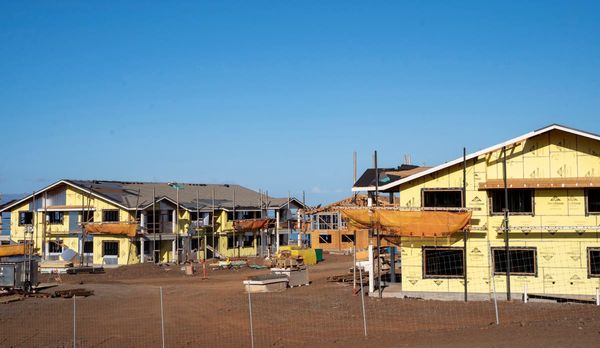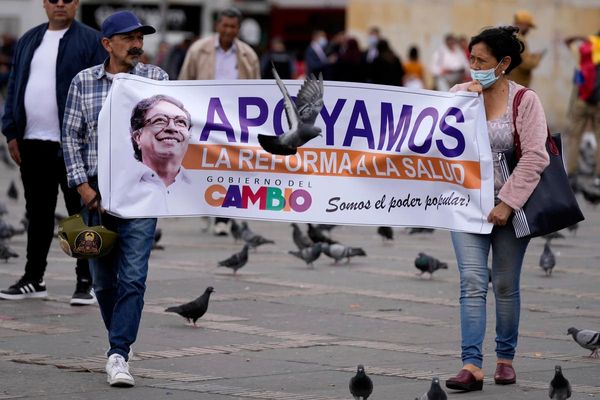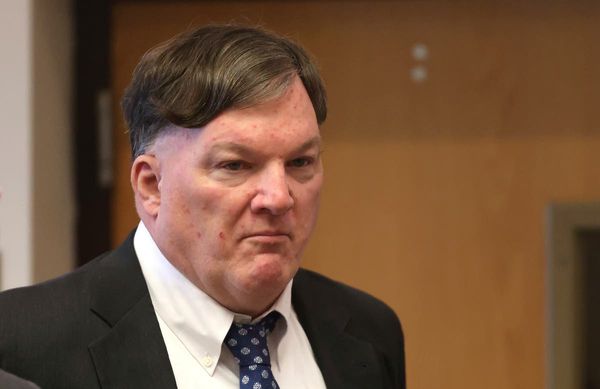
Philip Lowe has said struggling Australians can cut back spending or pick up more work to reduce financial stress after the Reserve Bank of Australia raised interest rates for the 12th time in just over a year.
The RBA governor also warned against the idea that all workers should be compensated for inflation, saying “we have to make sure that higher inflation doesn’t translate into higher wages for everybody”.
Lowe on Wednesday reinforced the central bank’s intention to keep lifting rates as needed to ensure inflation returned to its 2-3% target range, even if it stretched households and firms and lifted the unemployment rate.
Speaking a day after the RBA lifted the cash rate for a 12th time in 13 months, Lowe said Australia can still achieve a soft economic landing while bringing down inflation but the path was narrow and “likely to be a bumpy one”.
He said rates needed to be hiked again because there had been “upside surprises” on inflation, wages and housing prices, as well as inflation overseas.
“We felt like we couldn’t just sit idly and say, ‘well, this is just all accidental, just noise’,” he told a bank conference in Sydney.
He said the desire to preserve the strength of the labour market “does not mean that the RBA board will tolerate higher inflation persisting”. “There is a limit to how long inflation can stay above the target band,” he told the conference, according to a copy of his speech.
Lowe said the effects of the rate rises were “felt unevenly across the community”, including “causing significant financial pressure for some households”.
“But this unevenness is not a reason to avoid using the tool that we have,” he said.

The RBA chief said the influence on inflation from last week’s decision by the Fair Work Commission to raise the minimum wage by 5.75% depended on how much the increase “spreads across other parts of the labour market”.
He said it was “perfectly understandable” for the lowest-paid workers in the country to be compensated for inflation.
But he said “we will get ourselves into trouble if we accept the premise that all workers need to be compensated for inflation”.
“If we accept that premise, inflation at 7% and wage rises [to] match that, what do you think inflation will be next year? It will be higher again and then we will have to have higher wage increases again.
“We are in a difficult position where society wants to protect the lowest-paid workers but we have got to make sure that the higher inflation doesn’t translate into higher wage outcomes for everybody.
“Because if that happens, the inflation persists and we will be in the world that I spoke about before that we’re trying to avoid. It is a tricky balancing act we are trying to manage at the moment.”
Most economists and financial markets were again wrongfooted by the RBA’s latest rate rise, a move that sent the Australian dollar half a US cent higher and stocks lower.
Analysts will pore over Lowe’s comments for indications of how likely it is that the central bank will add to what is already the steepest series of rate rises since it began targeting inflation more than three decades ago.
Ahead of today's speech by RBA gov Lowe and March quarter GDP markets were only giving an 11% chance that the cash rate will rise another 25bp to 4.35% in July. Still, odds are now heavily shifting to one more hike before the year is out. pic.twitter.com/pvX3pKBF8Z
— @phannam@mastodon.green (@p_hannam) June 6, 2023
Lowe singled out wage pressures and inflation expectations as among the key areas the board would be watching, as well as indications that people were falling behind on loan payments.
Mortgage arrears “remain very low, although they have increased a little of late”, he said. “Banks report that their customers are managing to make their mortgage payments, although many have had to cut back on other spending. So it is a complicated picture.
“If people can cut back spending, or in some cases find additional hours of work, that would put them back into a positive cash flow position,” he said.
Inflation had passed its peak, particularly for goods such as oil and food. But demand in the economy remained high, particularly for the services sector.
“This persistence in services price inflation reflects the strong demand for many services and strong growth in wages, against the background of weak productivity growth,” Lowe said.

The RBA was also looking at how much people expected prices to rise in the future as a guide to whether higher rates might be needed to quell inflation. Unfortunately, measures beyond the near term of inflation expectations are difficult to obtain.
One measure the RBA does check is how union officials view inflation over the next five to 10 years, and that gauge has shifted higher of late.

Other uncertainties include the state of the global economy, particularly how China will fare.
“The economic indicators for China were weak in April, after a strong initial bounce-back following the easing of the Covid restrictions late last year,” Lowe said.
“This has implications for Australia, not just in terms of the prices of goods in world markets but also for the prices of our resource exports, which have declined recently.”







